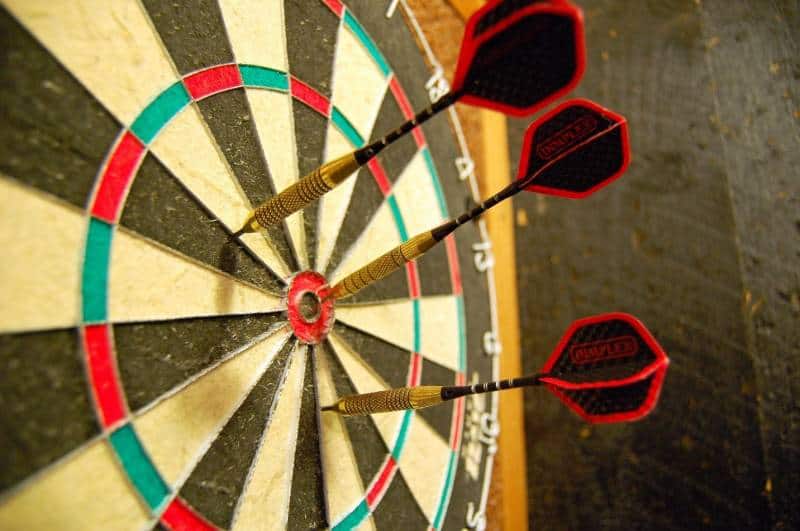Daring. This is how most of the people would describe concentrated value investing. Getting head to head with high-speed rail could certainly be thrilling and exciting, but in modern financial markets where everything is decided in a brink of a second, this could lead to a complete disaster – or would it? Let’s take a look at how great focused investors snatch a victory from the jaws of defeat.
As with this blog entry, we will be analyzing portfolios with few heavily lifted bets. Such strategies in the investment world are known as “focus investing” or “concentrated investing”. Evidently and to our surprise, several research studies even back up their outperformance as a whole.
“Go for the jugular,” Soros advising Druckenmiller, just a day before pound’s devaluation.
The basic reasoning of concentrated investing is in fact, pretty simple, it goes just as the saying goes: “winner takes it all” and it is in tandem with the world of poker. You see, they both have the same underlying rule of thumb: minimize your losses and extract the maximum there is out of your opportunities. Despite this, academic data suggests, that most of the investment funds fail to accomplish just that – extract the maximum there is out of given opportunities. Not only that, they also fail to prepare for the worst – take a look at their continuous underperformance, Jeez. Sadly, given the highly competitive field fueled by cognitive biases and strict regulations – it is likely to continue…
Lessons of holdem poker:
In poker, every betting interval requires the player to either check, raise or fold. In investing terms, that would mean either to add to the current position, maintain it as it is or cut the losses and get out. The probability of winning hand can be predetermined during the flop stage, just as the game begins, and the hands are assigned either as the ‘bad’ ones –fold, or ‘good’ ones – check. Shares obtained at inadequate levels can be compared to the bad hands of poker, sure you can win with them, but the likelihood of favourable outcome is small. Over time, such chances or ‘Dame Fortuna tunes’ as B. Graham would call them, would considerably diminish as the number of trials increased, hence, the investor or the experienced poker player should always prefer to play with the ‘good’ hands given – an investor should act upon obtaining adequately priced company shares, as it increases the likelihood of winning over time.
The early betting stage of poker is where it gets interesting though. Given the right – ‘good’ cards, an experienced player will seize the opportunity with an adequate bet. The bet is placed to the extent that if the loss, in fact, occurred it would not leave the player without a further bankroll to bet, or a beggar on the street. It would however considerably diminish his war chest. A loss to 3-17% is considered a standard in such scenarios. For a grinding gem hunting investor, the stop-loss order is often placed within this range.
The same rule of thumb applies when a focused investor finds out an opportunity in a market – a so-called ‘good’ card, an undervalued share of a company. He starts to engage in a ‘buildup’ process. First, acquiring a small, but significant stake given the information obtained and unveiled at the time, calmly yet patiently waiting and progressing to the later stage, engaging in buying activities as odds swing in favour and conviction increases. “Every battle is won or lost before it’s ever fought”. As Sun Tzu would quickly point out.
| Stock | % of portfolio | Shares | Recent activity | Reported Price* | Value |
| FCAU – Fiat Chrysler Automobiles NV | 60.62 | 13,109,310 | None | $17.84 | $233,870,000 |
| GOOG – Alphabet Inc. CL C | 12.43 | 45,828 | Reduce 30.80% | $1046.39 | $47,954,000 |
| AER – AerCap Holdings N.V. | 11.01 | 807,721 | Reduce 22.87% | $52.61 | $42,494,000 |
| RACE – Ferrari NV | 10.84 | 398,138 | None | $105.01 | $41,808,000 |
| LUV – Southwest Airlines | 5.11 | 300,975 | None | $65.45 | $19,699,000 |
[Table 1] Mohnish.Pabrai portfolio weightings as off Q4 2017,
| Stock | % of portfolio | Shares | Recent activity | Reported Price* | Value |
| BAM – Brookfield Asset Management Inc. | 10.89 | 7,686,014 | Reduce 0.56% | $43.56 | $334,817,000 |
| LBTYK – Liberty Global Inc. C | 10.58 | 9,612,930 | Reduce 2.00% | $33.84 | $325,302,000 |
| SCHW – Charles Schwab | 10.21 | 6,112,229 | Reduce 1.26% | $51.37 | $313,985,000 |
| ALSN – Allison Transmission Holdings | 10.04 | 7,165,163 | Reduce 0.14% | $43.07 | $308,604,000 |
| CABO – Cable ONE Inc. | 8.20 | 358,409 | Add 53.62% | $703.35 | $252,087,000 |
| AXTA – Axalta Coating Systems Ltd. | 8.06 | 7,657,287 | Add 1.18% | $32.36 | $247,790,000 |
| CHTR – Charter Communications | 7.00 | 640,658 | Buy | $335.96 | $215,235,000 |
| AAPL – Apple Inc. | 6.82 | 1,239,748 | Add 0.39% | $169.23 | $209,803,000 |
| BRK.B – Berkshire Hathaway CL B | 6.69 | 1,037,262 | Reduce 21.60% | $198.22 | $205,606,000 |
| ST – Sensata Technologies Holding | 6.48 | 3,900,128 | Add 0.29% | $51.11 | $199,336,000 |
| SBAC – SBA Communications Corp. | 6.38 | 1,201,439 | Reduce 0.44% | $163.36 | $196,267,000 |
| TYL – Tyler Technologies Inc. | 5.16 | 896,097 | Add 0.83% | $177.05 | $158,654,000 |
[Table 2] SQ Advisors, Lou Simpson portfolio weightings as of Q4 2017,
| Stock | % of portfolio | Shares | Recent activity | Reported Price* | Value |
| FOX – Twenty-First Century Fox CL B | 18.41 | 53,326,334 | None | $34.12 | $1,819,494,000 |
| ADS – Alliance Data Systems | 15.07 | 5,877,400 | None | $253.48 | $1,489,803,000 |
| CBG – CBRE Group | 10.92 | 24,916,923 | Reduce 13.72% | $43.31 | $1,079,151,000 |
| KKR – KKR & Co. L.P. | 10.18 | 47,750,000 | Add 4.82% | $21.06 | $1,005,615,000 |
| MS – Morgan Stanley | 9.53 | 17,959,620 | Add 0.42% | $52.47 | $942,341,000 |
| STX – Seagate Technology | 9.08 | 21,458,600 | None | $41.84 | $897,827,000 |
| MSFT – Microsoft Corp. | 7.80 | 9,014,063 | Add 0.01% | $85.54 | $771,062,000 |
| TRN – Trinity Industries | 7.05 | 18,607,352 | Add 7.84% | $37.46 | $697,031,000 |
| AWI – Armstrong World Industries Inc. | 5.64 | 9,202,612 | None | $60.55 | $557,218,000 |
[Table 3] Jeffrey Ubben portfolio weightings as off Q4 2017,
| Stock | % of portfolio | Shares | Recent activity | Reported Price* | Value | |
| COMM – CommScope Holding Co. | 18.94 | 3,819,482 | Add 3.78% | $37.83 | $144,491,000 | |
| OI – Owens-Illinois Inc. | 18.83 | 6,481,703 | Add 2.32% | $22.17 | $143,699,000 | |
| ARRS – ARRIS International plc | 15.12 | 4,490,706 | Add 13.52% | $25.69 | $115,366,000 | |
| HUN – Huntsman Corp. | 14.58 | 3,341,917 | Reduce 4.02% | $33.29 | $111,252,000 | |
| EMN – Eastman Chemical | 13.68 | 1,126,613 | Reduce 7.49% | $92.64 | $104,369,000 | |
| DBD – Diebold Inc. | 11.61 | 5,419,841 | Reduce 16.38% | $16.35 | $88,614,000 |
[Table 4] Alex Roepers portfolio weightings as off Q4 2017,
Of course, there is an exception to this buildup progress – the ‘perfect card’ scenario, that is, cases, where the odds are so significantly in-your favour and the downside scenario, is just a bruise on overall portfolio, that you can go ‘all-in’. Often measured by downside/upside ratio. This is the combination of cards that George Soros held when he dared to challenge the reigning pound sterling, this is the cards that Nathan Rothchild placed on the gold-bullion market with his family fortune online and this is the cards, that Michael Burry held during the infamous 2008 ‘Big Short’.
The given scenarios and their play out scenario summary can be put on two simple tables – action matrixes. This should guide focused investor into his decision-making progress.
| Valuation | Conviction | Maximum Weight | Portfolio Allocation | Theme |
| Lifetime opportunity | Maximum | 80 – 200% | Leveraging over given funds | Has* to pay-off in given time. |
| Heavily Undervalued | Very High | 40 – 80% | Highest Allocation | Long Term play |
| Undervalued | High | 10-40% | High Allocation | Long Term play |
| Medium | High | 10 – 20% | Normal Allocation | Long Term play |
| Medium | Medium | 3 – 8% | Nibbling Allocation | Long Term play / Short – Term |
[Table 5] Conviction versus valuation.
| Price to Valuation | Action |
| Drastically Increased | Reducing given position |
| Insignificantly Increased | Riding the winner. Adding. |
| Decreased | If convinced that market is wrong. Adding |
| Decreased | If convinced that market is right. Cutting |
[Table 6] Actions to price/value changes.
Notice the word “Has” (Table 5) – in leverage cases, pay-off has to be granted and in short time period, otherwise you may fall in a prolonged battle against entire market. No one wants that, as it may turn catastrophic. Pointing out the second action table, riding winners is a strategy having its own shortcomings, although it’s mathematical edge comes in simple form, it doesn’t require that much conviction as the falling knife scenarios. Why? Simply – A dog often remains a dog, management unwilling to buy back their own stock at significant support levels allow you to become a ‘patsy’ – a Passover, a crook’s bank. This is why ‘extra’ conviction is needed.
Although the cheaper issue gets – the heaver a position can be built in the end, S.Drucknemiller lays it all out: “position size can be more important than entry price.”, “Paper losses or paper gains, in the end, it’s position that makes you rich.”.
From the same roots
The framework is simple, yet hard to accomplish. Maximising winnings requires extrapolating given advantages one has over others, and playing the game of edges (industry specific, business specific, country-specific) the best investors tend to understand that investing is all about exploitation – it is a game in which you try to extract as much as possible from winning situation and lose as less as possible from losing one. For a value investor – Safety is in valuation, more accurately known as Margin of safety.
Timeless as it is, it serves the purpose of limiting possible downside and maximizing upside scenario tail gain.
The mentor becomes mentored
Despite Graham being more of a diversification fan due to his NCAV and Net-Net baskets, his successors had a range of portfolio types.
One of concentration school originators and a hybrid investing guru is known as Joel G. Yes, the Author of “You can be Stock Market Genius”. An investor focusing on quality driven value stocks with high return on capital.
Greenblatt lays out a simple, yet classic principle that a lot of focused investors adopted: “Primary ideas should be the ones that, surely won’t lose money.”:
| Issue 1 | Safest Bet. | 20% Weight |
| Issue 2 | Very safe. | 17% Weight |
| Issue 3 | Safe. | 15% Weight |
| Issue 4 | Safe. | 14% Weight |
[Table 7] From safest to riskiest
In total, the 4 positions should amount to the heavy part of portfolio (sometimes 100%) usually no less than 40%, depending on the total number of bets. Arbitrary, we can draw the law of 66% to 75%, it is in fact favorable sizing given 4 bets.
Take a look at top tier investor sizing:
| Name | Ticker | Class | % Port |
| Resolute Forest Products Inc. | RFP | Common | 21.73 |
| BERKSHIRE HATHAWAY INC | BRK.A | Common | 19.09 |
| WELLS FARGO & COMPANY/MN | WFC/WS | Warrants | 11.78 |
| GOLDMAN SACHS GROUP INC | GS | Common | 8.17 |
| Name | Ticker | Class | % Port |
| COTY INC. | COTY | Common | 36.52 |
| Alphabet Inc. | GOOG | Common | 32.95 |
| HCA Holdings, Inc. | HCA | Common | 21.37 |
| FROST Group, Inc. | GRSH | Common | 9.16 |
[Table 9] Legendary Michael Burry, Scion Asset Management Q3 2016*;
- Francis Chou, 4 bets amounting to: ~60%.
- Michael Burry, 4 bets amounting to: ~100%.
- Seth Klarman, 4 bets amounting to: ~40%
- Norbert Lou, 3 bets amounting to: 100%
| Stock | % of portfolio | Shares | Recent activity | Reported Price* | Value |
| SYF – Synchrony Financial | 11.22 | 29,295,030 | None | $38.61 | $1,131,081,000 |
| LNG – Cheniere Energy Inc. | 11.07 | 20,726,340 | None | $53.84 | $1,115,906,000 |
| VSAT – Viasat Inc. | 9.77 | 13,158,137 | None | $74.85 | $984,887,000 |
| FOXA – Twenty-First Century Fox | 7.63 | 22,288,731 | Add 16.47% | $34.53 | $769,630,000 |
[Table 10] Seth Klarman, Baupost Group Q4 2017.
| Name | Ticker | Class | % Port |
| Berkshire Hathaway Inc. | BRK.A | Common | 62.79 |
| Baidu.Inc | BIDU | ADR’s | 21.94 |
| Wells Fargo & Company. | WFC/WS | Warrants | 15.27 |
[Table 11] Norbert Lou, Q4 2017.
The first three or four positions are the real bets you take. To paraphrase W.Buffet: “It’s crazy to put money in your twentieth choice rather than your first choice”.
Although Joel’s rule of 66% may sound good, in reality the best way to measure adequate size is trough J.Kelly criterion for portfolio allocation – but even that is just approximation, as sticking to the formula is non-adaptive game in an adaptive market environment, keen short sellers scramble for such players who can’t leave their houses without formulas. It shouldn’t be used as ‘precise’ mechanism, as stocks are much different animals than cards or horses, but approximate bet sizing can be proxied trough Kelly formula. The precise correction should be cumulatively organized and combined to reflect the sum of all variables, such as: 1. Conviction 2. Margin of Safety 3. Informational Edge 4. Analytical Edge 5. Knowledgeable pattern. For further guidance, see Kelly Criterion for Stock picking.
Next, well move on the styles of play, and which type of game you should play. Keep in mind – There is a range of routes to obtain great results.
Defensive playstyle:
Although we already discussed a lot about poker – the traits of players and their characteristics, are transferable to the investment world. So, it is, with the player himself, the essential knowledge, the guide that he has to follow should be mirrored by traits that he displays. As Ben Graham would once again lay out – “investing isn’t about beating others at their game. It’s about controlling yourself at your own game.” If an investor, possesses defensive personality, he should – buy stocks that perfectly fit his personality. Not only that, he should engage in game passively. Maintaining low portfolio turnover, holding stocks for long period. Take a look at Norbert’s Lou holdings and M.Pabrai turnover:
Norbert Lou, Punch Card Capital.
| Time held all positions: | 11.00 quarters |
Mohnish Pabrai, Dalal Street, Pabrai Investments.
| Time held all positions: | 8.40 quarters |
Aggressive playstyle:
This is textbook play, on what the empirical studies actually point out2 – that low turnover combined with concentrated positions, actually position portfolio for a better performance then the benchmarks as a whole.
Aggressive playstyle is unique in its own, in that it utilizes trade off between stocks, playing a trend and jumping in an out of positions. The efficient use of such strategy, requires one to effectively adapt technical analysis and stop loss orders. An effective cutting in and out of positions lets the player to be minimize exposure to certain positions for a longer period of time. Michael Burry is well known, value investor with higher portfolio turnover. His reasoning? Avoiding single stock blow out scenarios.
Combining Stop-Loss orders with rising stock prices, is one hell of technique, requiring years of mastering. Although simple in its own mechanics, it’s effective usage requires years of practice. We’ll give you a hint this time: avoid putting stop losses on even numbers. (Too many orders on the same target price, won’t trigger your order, resulting in an impairment of capital).
A new way to think about probabilities
Many will argue, that calculating outcome scenarios in investing is rather useless activity. Not only that but a lot of great investment giants – successful market operators, would point out to art as a more descriptive subject than math to investing. And out of this – we should approach the subject as not a matter of precision, but a matter of a mixture of the two (Art and Math). Although hardly, if even related, the premise of such approach is also – referenced to poker. The given card combinations, could in fact – relate to a given stock characteristic. Let us look at this way.:
- Suited connectors (Poker combination) – A company that is buying back its stock (adds 2% probability of success).
- Pair – A company, that historically has paid out a significant majority of its cash flows as dividends. (adds 2% probability of success).
- High pair – An enterprise, with no debt, and no losses reported for a 10-year period. (adds 4% probability of success).
The point of such cumulative odds is not in sheer numbers, but rather in actions. The actions the company engage in, result in play-out scenarios of your investment, as market only reflects the real value the company created over lengthy periods. This is where the “art” part contributes the most, separating actions that result in value creation and odd maximization, from the ones that don’t, is where the real skills come in. There is a variety of ways to think about odds, but in the end, investing is not math just a mere approximation.
“If wars were arithmetic, then the mathematicians would rule the world.” – Same applies to investing.
It comes without notice, that company selling at a low multiple, yet growing in intrinsic value has a higher probability for outperforming outcome than the one with stagnating value. The assumption provided, should give a lay reasoning that investor buying stocks with declining intrinsic value should increase the “Margin of Safety” requirement, add to that, market conditions. And you are left with no more than 4 quality picks a year.
Tip of the iceberg
In reality, as market reigns on “everlasting” gains – most of the positions become fairly valued, leaving only tiny spectrum of stocks to play in. The universe of undervalued stocks changes its momentum and starts to shrink. The opportunities become rare and dense. The field becomes harder to play in. The opportunity costs increase. And focused investor is left with few choices. Build a war chest full of cash or migrate funds between cheaper positions in a given portfolio, incurring switching costs over and over. That’s not an easy task, which at the times, lead to continuous underperformance.
When opportunities are rare – continuously winning stocks with significant undervaluation are somewhat of bulletproof, fetching a fat tail winnings over and over again, this is why, often times, holding a stock that just rocketed a 20-30% is favorable (Take a closer look at portfolio tables – high concentration in a long time climbing stocks ‘GOOG’,BRK.A/B – so-called ‘Cannibals’), the market – already changed its mind, and now, the reflexivity is in the other direction.
The choice between staying all time in the market or staying out of the market, is once again, more of a personal approach, however, staying too long and with high exposure to a specific sector with no cash reserves – is a scene of a disaster. So, make sure, your massive exposure to an industry group is protected with your cash reserves on the sideline. That’s what you would see from pros/seasoned veterans such as Howard Marks from Oaktree or already mentioned Seth Klarman. The other play? Diversify trough diversified conglomerates, like Berkshire shares and stay all-in-the market.
| Valuation | Action |
| Less Undervalued | Sell a portion. (Migrate Out) |
| More Undervalued | Buy a portion. (Migrate In) |
[Table 12] Valuation and Position migration.
Main theme and lessons of this article?
“Quit while you still can.”
“Play to win big – else don’t play at all.”
“Position is what makes you rich.”
This article was published for CityFalcon blog readers. It does not recommend any investments, nor does it advise on such. Always keep in mind that any investments you make are associated with risks and as such, pose an extreme danger of permanent capital loss and require caution.
A wise man makes his own decisions and only a fool – follows public opinion.
Good luck on your journey!









Leave a Reply